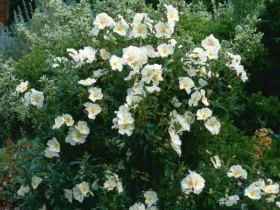Calceolaria, commonly known as slipper flower or pocketbook plant, is a genus of flowering plants in the family Calceolariaceae. These unique and charming plants are known for their distinctive pouch-shaped flowers, which resemble small slippers or pocketbooks. Calceolaria species are native to various parts of South America and are often cultivated as ornamental plants for their striking and unusual blooms.
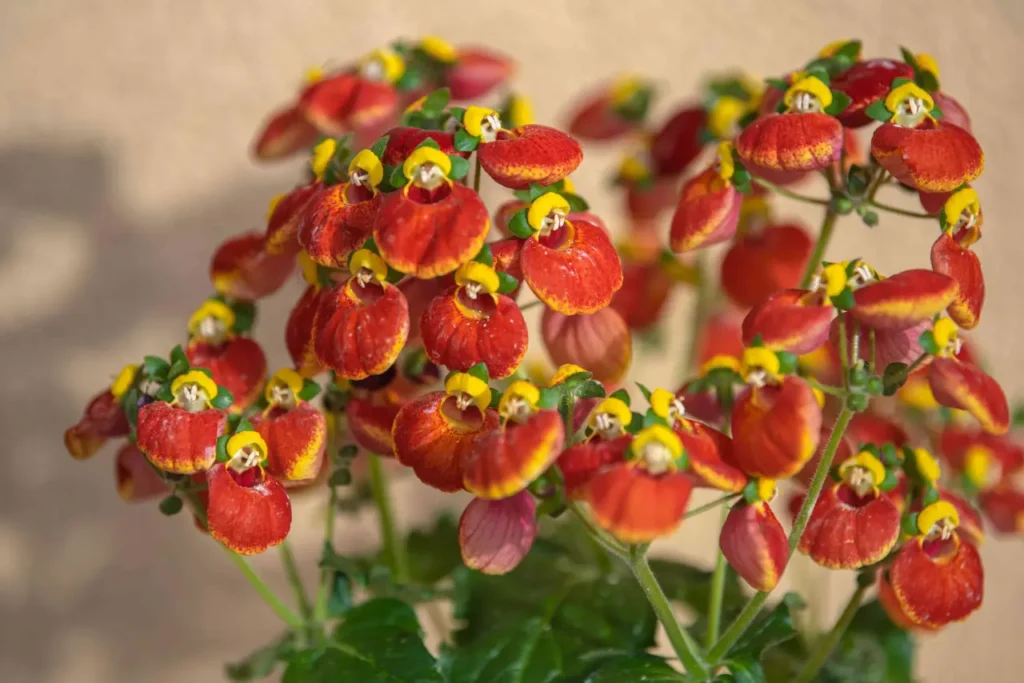
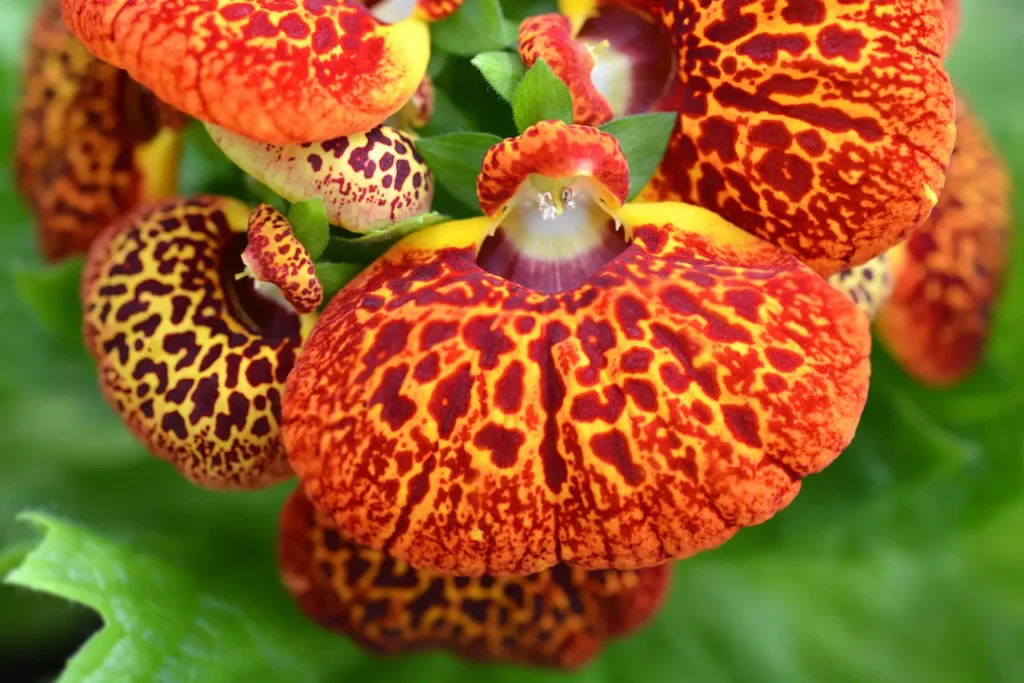
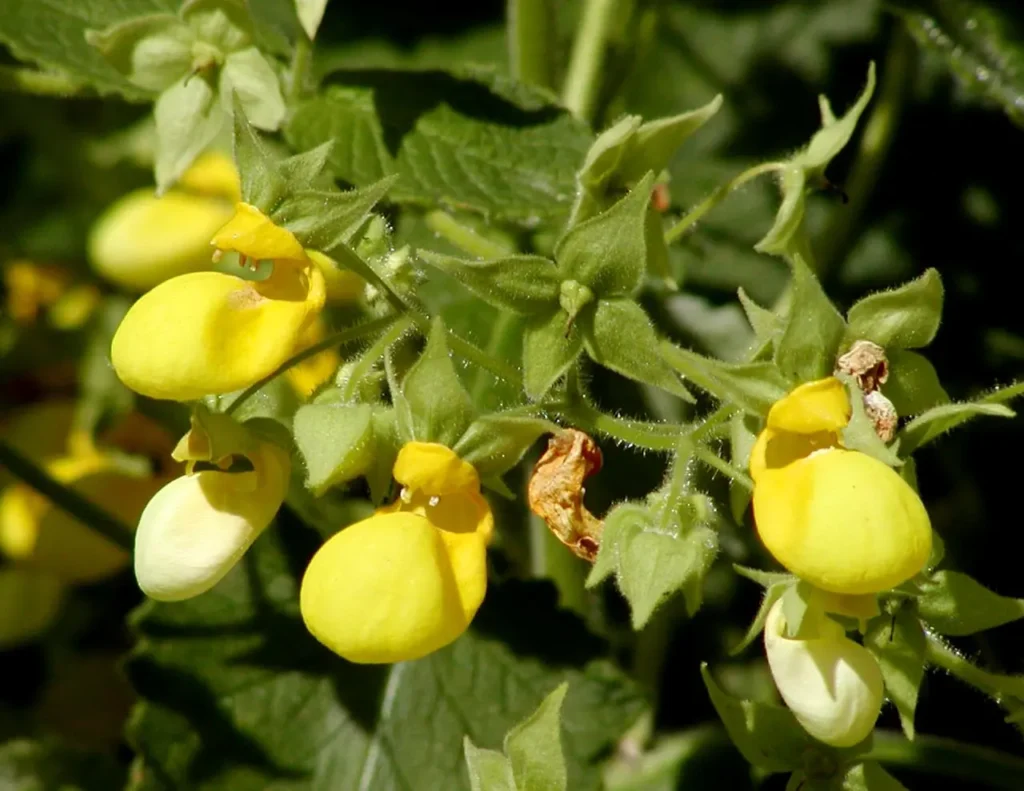
Here’s some information about Calceolaria flowers:
Physical Characteristics:
- Flower Structure: The most distinctive feature of Calceolaria flowers is their pouch-shaped structure, which gives them the appearance of little slippers or pockets. This structure is created by the fusion of two petals, forming a single pouch-like structure.
- Colors: Calceolaria flowers come in a wide range of vibrant colors, including shades of yellow, orange, red, pink, and even bicolor combinations.
- Foliage: The leaves of Calceolaria plants are usually simple, opposite, and sometimes toothed or lobed, depending on the species.
Habitat and Distribution:
- Calceolaria species are native to various regions of South America, including the Andes mountains.
- They typically grow in high-altitude environments, such as cloud forests and alpine meadows.
Cultivation and Care:
- Calceolaria plants can be a bit challenging to grow, as they have specific requirements and can be susceptible to diseases and pests.
- They prefer cool temperatures and high humidity, making them suitable for greenhouse or indoor cultivation in some regions.
- Well-draining soil and adequate air circulation are important to prevent root rot and fungal issues.
Propagation:
- Calceolaria can be propagated from seeds, although they require specific conditions for germination.
- Propagation from cuttings is also possible, especially for hybrid varieties that may not produce seeds with the same characteristics as the parent plant.
Cultural and Symbolic Significance:
- Calceolaria flowers are often admired for their unique appearance and striking colors, which make them stand out in gardens and floral arrangements.
- In some cultures, Calceolaria flowers are associated with symbolism related to beauty, uniqueness, and elegance.
Note: While Calceolaria flowers are visually captivating, they can be challenging to cultivate successfully, especially in climates that do not match their native habitat. If you’re interested in growing Calceolaria plants, it’s recommended to research their specific care requirements and consider starting with more common or cultivated varieties.
Overall, Calceolaria flowers are remarkable and unusual in their appearance, making them a sought-after addition for enthusiasts of unique and exotic plants.
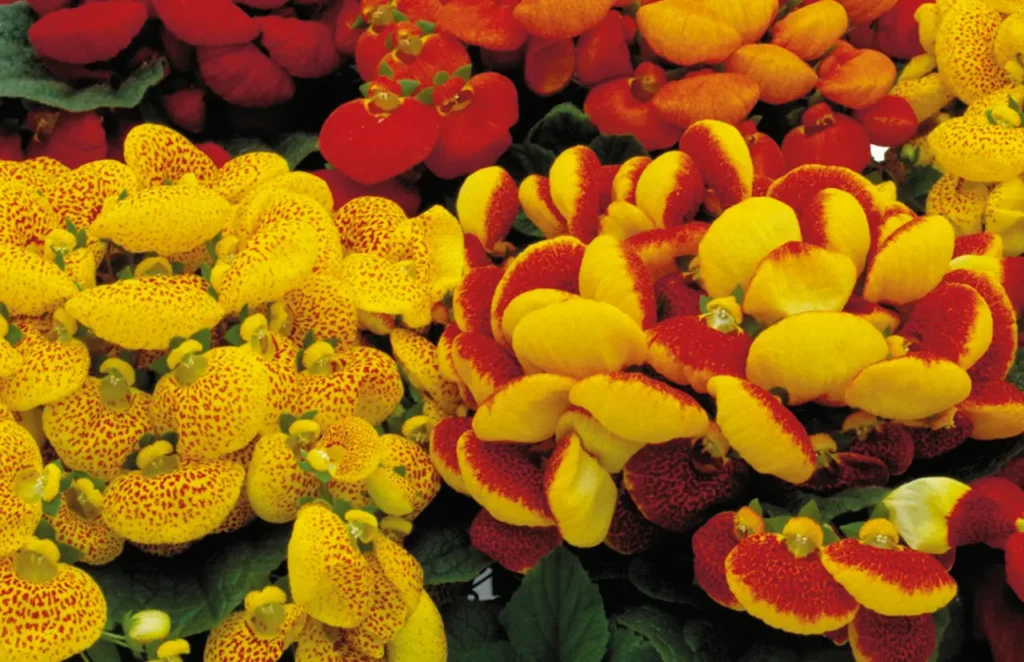
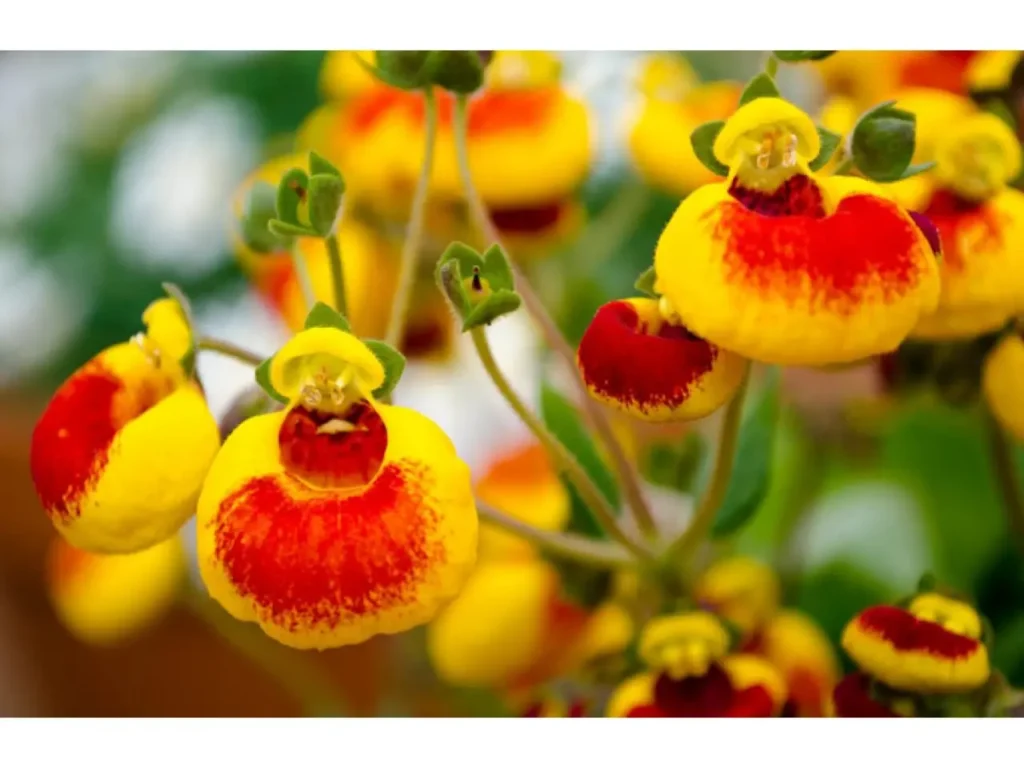
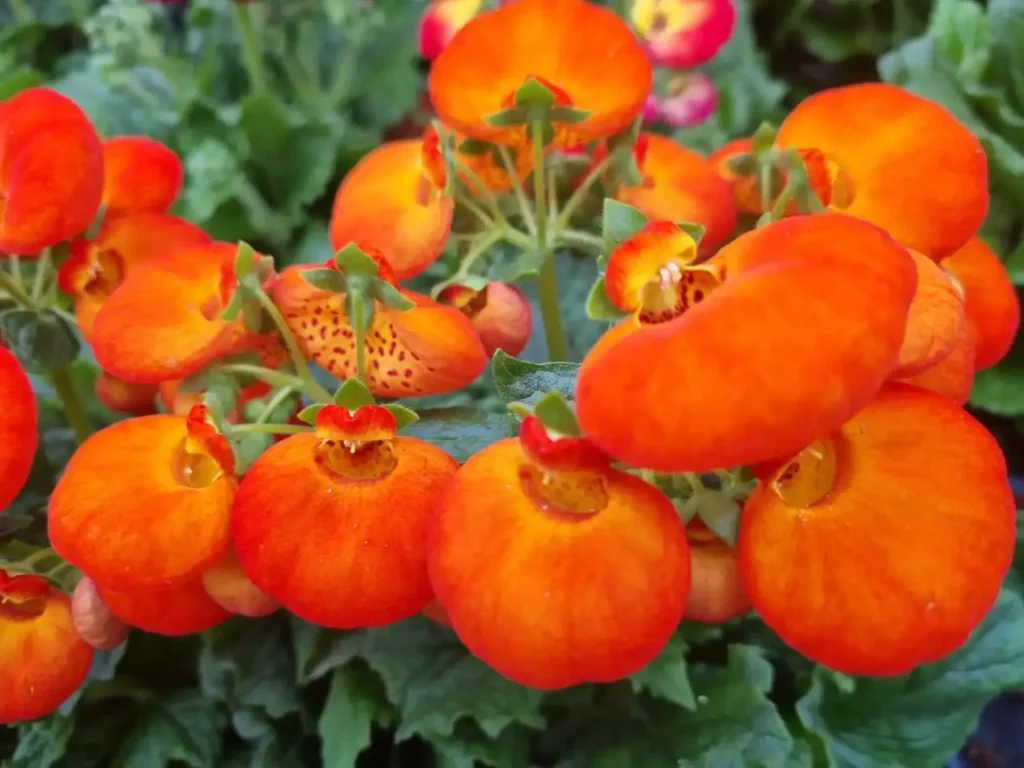
Types of Calceolaria flower
Calceolaria, commonly known as slipperwort or pocketbook flower, is a genus of flowering plants with distinctive pouch-like flowers. Here are some notable species of Calceolaria flowers:
- Calceolaria uniflora: Also known as Chilean Slipper Flower, this species is native to South America and produces bright yellow flowers with a pouch-like shape.
- Calceolaria crenatiflora: Native to Chile, this species features unique flowers with orange or yellow pouches and fringed edges.
- Calceolaria integrifolia: This species is found in Chile and has yellow flowers with a velvety texture and a rounded pouch.
- Calceolaria tripartita: Also known as Tripartite Slipper Flower, this species has three-lobed leaves and produces pouch-like flowers in various colors, including shades of yellow, orange, and red.
- Calceolaria arachnoidea: Native to Chile, this species has distinctive flowers with a spiderweb-like pattern on the pouch. Flowers can be various colors, including red, orange, and yellow.
- Calceolaria chelidonioides: This species is endemic to the Juan Fernández Islands and produces bright yellow or orange pouch-like flowers.
- Calceolaria pinifolia: Native to the Andes mountains, this species has unique flowers with a pouch-like structure and a resemblance to pine cones, giving it its name.
- Calceolaria falklandica: Found in the Falkland Islands, this species produces yellow flowers with a distinctive pouch shape.
- Calceolaria dentata: Native to Chile, this species features yellow or orange flowers with a notched pouch and fringed edges.
- Calceolaria biflora: Also known as Twinflowered Pocketbook, this species has paired yellow or orange flowers on each stem.
- Calceolaria pinnata: Native to the Andes, this species features bright yellow flowers with a pouch-like structure and deeply cut leaves.
- Calceolaria rugosa: Also known as Wrinkled Slipper Flower, this species has distinctive wrinkled leaves and produces yellow, orange, or red flowers with a pouch-like shape.
- Calceolaria kleiniana: Found in the Andes, this species has small, bright yellow flowers with a pouch-like structure.
- Calceolaria chionantha: This species produces white or cream-colored flowers with a pouch-like shape and is native to South America.
- Calceolaria herbeohybrida: Known as Herbaceous Calceolaria, this is a group of hybrid Calceolaria plants with various flower colors and pouch shapes.
- Calceolaria mexicana: Native to Mexico, this species has yellow or orange flowers with a distinctive pouch-like structure.
- Calceolaria tomentosa: Found in Chile and Argentina, this species features small yellow flowers with a fuzzy texture and a pouch-like shape.
- Calceolaria corymbosa: Also known as Corymb Calceolaria, this species produces clusters of bright yellow flowers with a pouch-like structure.
- Calceolaria pallida: Native to Chile, this species has pale yellow or cream-colored flowers with a pouch-like shape.
- Calceolaria alba: This species produces white or pale yellow flowers with a pouch-like structure and is native to the Andes.
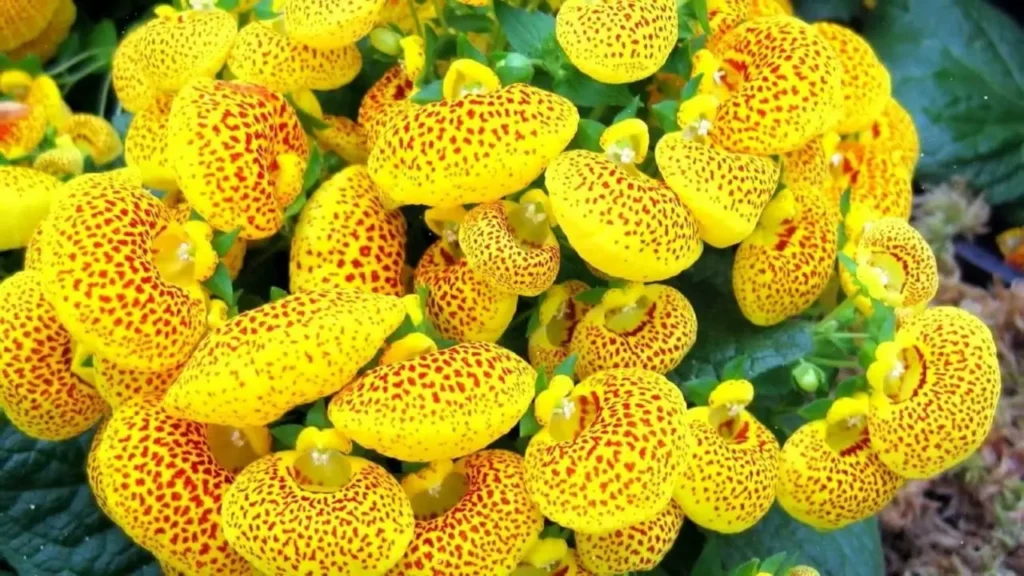
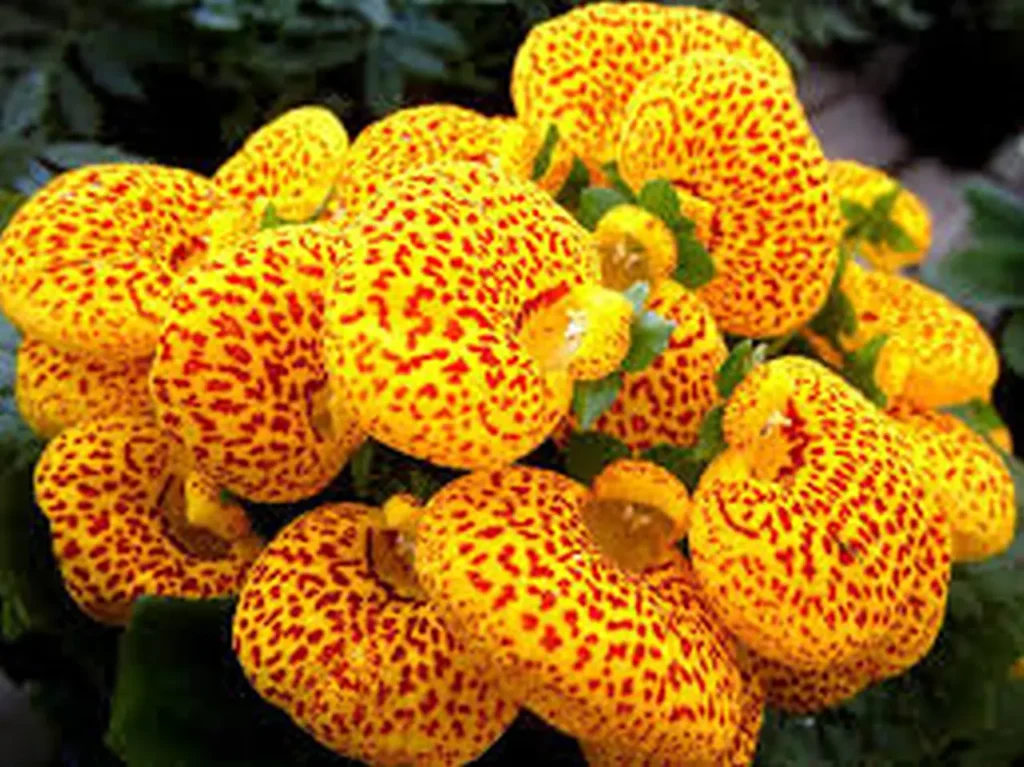
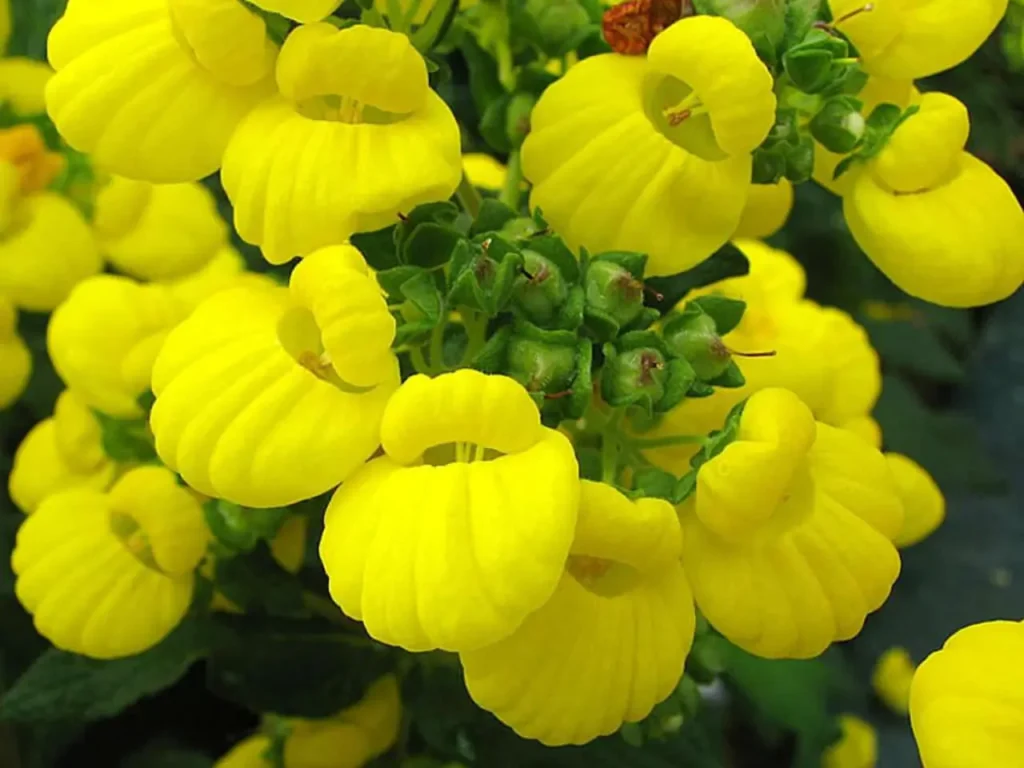
These are just a few examples of the many species within the Calceolaria genus. Each species has its own unique characteristics and variations in flower color, pouch shape, and foliage. Calceolaria plants are known for their interesting and often intricate flower structures, making them popular among gardeners and flower enthusiasts.
